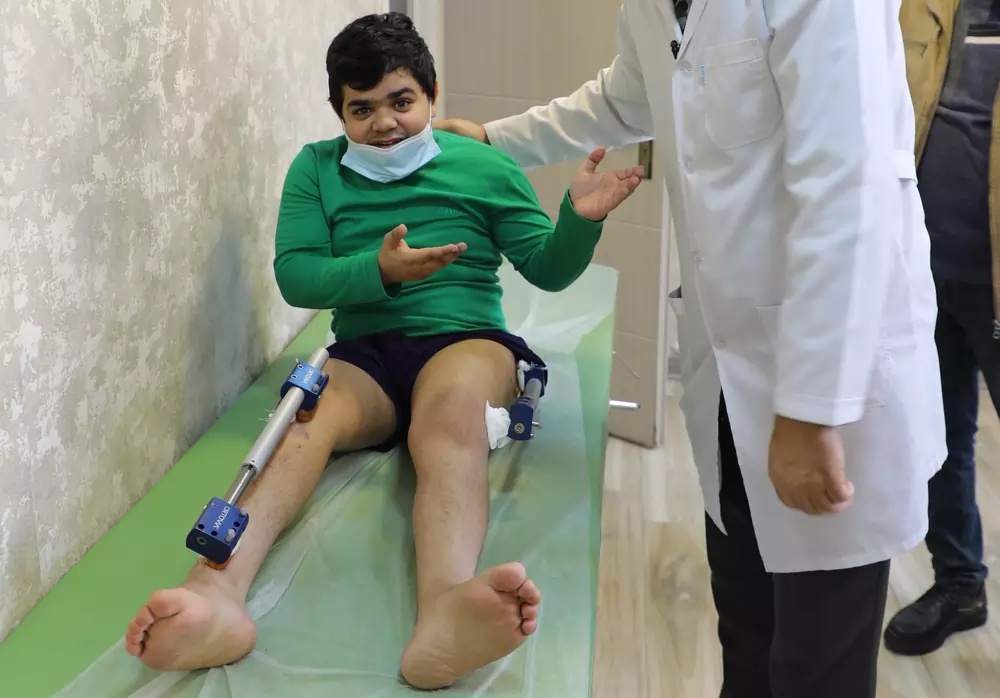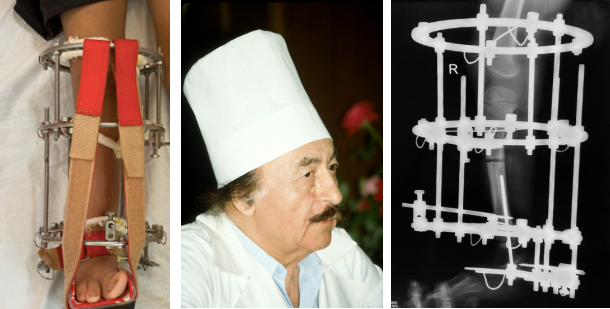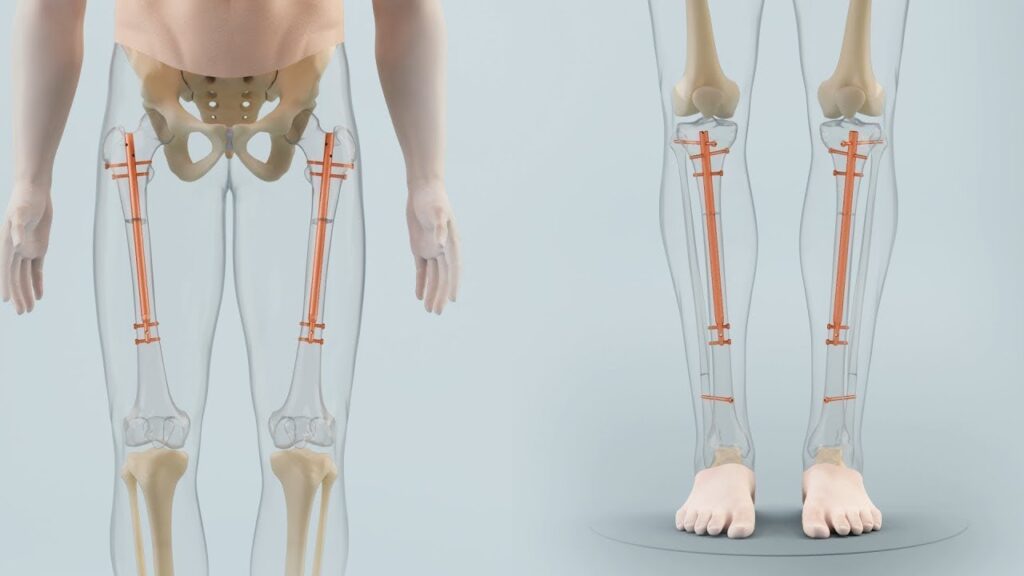Discover who the ideal candidates for limb lengthening surgery are. Learn about the conditions that warrant the procedure, patient criteria, and the benefits and risks involved.

Outline
| Headings | Sub-Headings |
|---|---|
| Introduction | – Understanding Limb Lengthening Surgery |
| What is Limb Lengthening Surgery? | – Basic Overview |
| – History and Evolution | |
| Conditions Treated by Limb Lengthening Surgery | – Congenital Limb Length Discrepancies |
| – Post-Traumatic Limb Length Discrepancies | |
| – Growth Abnormalities | |
| – Cosmetic Height Enhancement | |
| Medical Criteria for Limb Lengthening Surgery | – Age Requirements |
| – Health Considerations | |
| – Bone Quality and Density | |
| – Psychological Readiness | |
| Specific Conditions and Ideal Candidates | – Congenital Short Femur Syndrome |
| – Fibular Hemimelia | |
| – Achondroplasia | |
| – Post-Traumatic Shortening | |
| – Discrepancies Due to Growth Plate Injuries | |
| Pre-Surgery Evaluation Process | – Medical History Review |
| – Physical Examination | |
| – Imaging and Diagnostic Tests | |
| – Psychological Assessment | |
| Benefits of Limb Lengthening Surgery | – Improved Mobility |
| – Enhanced Quality of Life | |
| – Psychological and Emotional Benefits | |
| Risks and Complications | – Common Surgical Risks |
| – Long-Term Complications | |
| – Psychological Impact | |
| Success Rates and Patient Outcomes | – Factors Influencing Success |
| – Patient Testimonials | |
| Technological Advances in Limb Lengthening Surgery | – Modern Techniques |
| – Future Innovations | |
| FAQs | – |
| – Who is an ideal candidate for limb lengthening surgery? | |
| – What medical conditions are treated with limb lengthening? | |
| – How is the pre-surgery evaluation conducted? | |
| – What are the benefits of limb lengthening surgery? | |
| – What are the risks of limb lengthening surgery? | |
| – What advancements are being made in limb lengthening surgery? | |
| Conclusion | – |
Who are the Ideal Candidates for Limb Lengthening Surgery?
Limb lengthening surgery is a highly specialized procedure designed to correct limb length discrepancies and improve patients’ quality of life. This comprehensive guide explores who the ideal candidates for limb lengthening surgery are, the conditions that warrant the procedure, patient criteria, and the associated benefits and risks.
Introduction
Limb lengthening surgery has advanced significantly, providing solutions for various medical conditions that result in limb length discrepancies. Understanding who can benefit from this surgery is crucial for making informed decisions about treatment options.
What is Limb Lengthening Surgery?
Basic Overview
Limb lengthening surgery involves gradually stretching bones to increase their length. This is typically done through a surgical technique known as distraction osteogenesis, where the bone is cut and slowly separated to allow new bone tissue to form in the gap.
History and Evolution
The history of limb lengthening surgery dates back to ancient attempts using rudimentary methods. Modern techniques have evolved significantly, particularly with the development of the Ilizarov method in the mid-20th century, which has paved the way for advanced surgical interventions today.
Conditions Treated by Limb Lengthening Surgery
Congenital Limb Length Discrepancies
Congenital limb length discrepancy is a condition present at birth where one limb is significantly shorter than the other. This can affect the legs, leading to walking difficulties and other functional impairments.
Post-Traumatic Limb Length Discrepancies
Severe bone fractures and injuries can lead to limb length discrepancies if the bones do not heal properly. Limb lengthening surgery can correct these discrepancies, restoring normal limb length and function.
Growth Abnormalities
Conditions like achondroplasia and other forms of skeletal dysplasia result in abnormal growth patterns that can cause significant limb length discrepancies. Limb lengthening surgery helps address these growth abnormalities.
Cosmetic Height Enhancement
Some individuals seek limb lengthening surgery for cosmetic reasons, such as increasing their height. This application is more controversial but offers psychological and aesthetic benefits for some patients.
Medical Criteria for Limb Lengthening Surgery
Age Requirements
Ideal candidates for limb lengthening surgery are typically children and young adults whose bones are still growing. However, adults can also undergo the procedure if they meet specific medical criteria.
Health Considerations
Candidates must be in good overall health, with no underlying conditions that could complicate surgery or recovery. Conditions like diabetes or cardiovascular disease need careful management.
Bone Quality and Density
Healthy bone quality and density are essential for successful limb lengthening. Patients with osteoporosis or other bone density issues may require additional treatments or considerations.
Psychological Readiness
Psychological readiness is crucial for undergoing limb lengthening surgery. Candidates must undergo thorough psychological evaluation and counseling to ensure they are mentally prepared for the procedure and recovery process.
Specific Conditions and Ideal Candidates
Congenital Short Femur Syndrome
Patients with congenital short femur syndrome, where the femur is underdeveloped at birth, can benefit significantly from limb lengthening surgery to achieve better limb proportions and functionality.
Fibular Hemimelia
Fibular hemimelia, characterized by the absence or underdevelopment of the fibula bone, is another condition that can be effectively treated with limb lengthening surgery.
Achondroplasia
Achondroplasia, a genetic disorder causing short stature due to abnormal bone growth, makes individuals ideal candidates for limb lengthening surgery to improve height and limb proportions.
Post-Traumatic Shortening
Patients who have experienced severe trauma resulting in limb shortening can benefit from limb lengthening surgery to restore normal limb length and function.
Discrepancies Due to Growth Plate Injuries
Injuries to the growth plates in children can disrupt normal bone growth, leading to limb length discrepancies. Limb lengthening surgery can address these issues, promoting equal limb length as the child grows.
Pre-Surgery Evaluation Process
Medical History Review
A comprehensive review of the patient’s medical history is essential to identify any underlying conditions that could affect the surgery or recovery process.
Physical Examination
A thorough physical examination helps assess the patient’s overall health and the specific characteristics of the limb discrepancy.
Imaging and Diagnostic Tests
Imaging studies, such as X-rays, CT scans, and MRIs, provide detailed information about the bone structure and help plan the surgical procedure.
Psychological Assessment
Psychological assessment ensures that the patient is mentally and emotionally prepared for the demands of limb lengthening surgery and the recovery process.
Benefits of Limb Lengthening Surgery
Improved Mobility
One of the primary benefits of limb lengthening surgery is improved mobility. Correcting limb length discrepancies allows patients to walk more easily and participate in physical activities.
Enhanced Quality of Life
Limb lengthening surgery can significantly enhance the quality of life by improving physical function, reducing pain, and increasing self-esteem.
Psychological and Emotional Benefits
The psychological benefits of limb lengthening surgery are substantial. Patients often experience increased confidence and a better self-image following the procedure.
Risks and Complications
Common Surgical Risks
As with any surgical procedure, limb lengthening surgery carries risks such as infection, nerve damage, and blood clots. Surgeons take preventive measures to minimize these risks, but patients should be aware of potential complications.
Long-Term Complications
Long-term complications can include joint stiffness, muscle contractures, and unequal bone growth. Ongoing monitoring and rehabilitation are essential to manage and mitigate these issues.
Psychological Impact
The psychological impact of limb lengthening surgery can be significant. Patients must be prepared for the emotional and mental challenges during the recovery process.
Success Rates and Patient Outcomes
Factors Influencing Success
The success of limb lengthening surgery depends on various factors, including patient health, adherence to post-surgery care, and the expertise of the surgical team. Successful outcomes are characterized by proper bone healing and improved function.
Patient Testimonials
Many patients report significant improvements in their quality of life following limb lengthening surgery. Testimonials highlight increased mobility, reduced pain, and enhanced self-esteem as common benefits.
Technological Advances in Limb Lengthening Surgery
Modern Techniques
Modern techniques in limb lengthening surgery include advanced external fixators, motorized internal lengthening nails, and minimally invasive surgical methods. These innovations have improved precision and patient comfort.
Future Innovations
Future innovations in limb lengthening surgery may include the use of robotics, 3D printing, and regenerative medicine to enhance the precision, safety, and outcomes of the procedures.
FAQs
Who is an ideal candidate for limb lengthening surgery?
Ideal candidates include individuals with congenital limb length discrepancies, trauma-induced limb shortening, certain growth abnormalities, and those seeking cosmetic height enhancement.
What medical conditions are treated with limb lengthening?
Conditions treated include congenital short femur syndrome, fibular hemimelia, achondroplasia, post-traumatic shortening, and discrepancies due to growth plate injuries.
How is the pre-surgery evaluation conducted?
The evaluation includes a medical history review, physical examination, imaging studies, and psychological assessment to ensure the patient is prepared for surgery and recovery.
What are the benefits of limb lengthening surgery?
Benefits include improved mobility, enhanced quality of life, and significant psychological and emotional benefits.
What are the risks of limb lengthening surgery?
Risks include infection, nerve damage, joint stiffness, muscle contractures, and the potential for unequal bone growth.
What advancements are being made in limb lengthening surgery?
Advancements include the development of motorized internal lengthening nails, minimally invasive techniques, and potential future innovations such as robotics and regenerative medicine.
Conclusion
Limb lengthening surgery is a critical intervention for various medical conditions that result in limb length discrepancies. By understanding the ideal candidates, conditions treated, and the benefits and risks, patients and healthcare providers can make informed decisions to improve mobility and quality of life.



